Apr 25, 2024
TechnologyFrom Makefile:
O ?= ./build
......
$O/bootx64.efi: $O/chainload/loader.efi $O/vmlinuz $O/initrd.cpio.xz
$O/chainload/unify-kernel $@ \
linux=$O/vmlinuz \
initrd=$O/initrd.cpio.xz \
cmdline=config/cmdline-5.4.117.txt
file content:
kkk@kkk:~/safeboot-loader$ ls build/chainload/loader.efi
build/chainload/loader.efi
kkk@kkk:~/safeboot-loader$ file build/chainload/loader.efi
build/chainload/loader.efi: PE32+ executable (EFI application) x86-64 (stripped to external PDB), for MS Windows
kkk@kkk:~/safeboot-loader$ ls build/chainload/loader.efi -l -h
-rwxrwxr-x 1 idv idv 52K 4月 18 14:32 build/chainload/loader.efi
kkk@kkk:~/safeboot-loader$ vim build/chainload/loader.efi
kkk@kkk:~/safeboot-loader$ ls build/vmlinuz
build/vmlinuz
kkk@kkk:~/safeboot-loader$ ls build/vmlinuz -l -h
-rw-rw-r-- 1 idv idv 2.5M 4月 18 10:12 build/vmlinuz
kkk@kkk:~/safeboot-loader$ ls build/initrd.cpio.xz -l -h
-rw-rw-r-- 1 idv idv 13M 4月 18 14:32 build/initrd.cpio.xz
kkk@kkk:~/safeboot-loader$ ls config/cmdline-5.4.117.txt
config/cmdline-5.4.117.txt
kkk@kkk:~/safeboot-loader$ cat config/cmdline-5.4.117.txt
earlyprintk=serial,ttyS0,115200 console=tty0 console=ttyS0,115200 noefi acpi=of
Apr 24, 2024
TechnologyAdd custom menu after the default menu:
root@vhdboot:/boot/efi/grub# diff grub.cfg grub.cfg.backback
2664,2666d2663
< if [ -e $vt_plugin_path/ventoy/ventoy_grub.cfg ]; then
< source $vt_plugin_path/ventoy/ventoy_grub.cfg
< fi
2675,2679c2672,2675
< source $vt_plugin_path/ventoy/ventoy_grub.cfg
< #menuentry "$NO_ISO_MENU (Press enter to reboot ...)" {
< # echo -e "\n Rebooting ... "
< # reboot
< #}
---
> menuentry "$NO_ISO_MENU (Press enter to reboot ...)" {
> echo -e "\n Rebooting ... "
> reboot
> }
Ventoy configuration files:
root@vhdboot:/boot/efi/grub# cat /mnt8/ventoy/ventoy.json
{
"control": [
{ "VTOY_MENU_LANGUAGE": "zh_CN" },
{ "VTOY_MENU_TIMEOUT": "3" },
{ "VTOY_DEFAULT_SEARCH_ROOT": "/HHHISO1" }
]
}
root@vhdboot:/boot/efi/grub# cat /mnt8/ventoy/ventoy_grub.cfg
menuentry 'Ubuntu' --class ubuntu --class gnu-linux --class gnu --class os $menuentry_id_option 'gnulinux-simple-d68c23a7-3d0b-4113-9127-8dac01ec1b29' {
insmod gzio
insmod part_gpt
insmod ext2
set root='hd0,gpt3'
if [ x$feature_platform_search_hint = xy ]; then
search --no-floppy --fs-uuid --set=root --hint-bios=hd0,gpt3 --hint-efi=hd0,gpt3 --hint-baremetal=ahci0,gpt3 d68c23a7-3d0b-4113-9127-8dac01ec1b29
else
search --no-floppy --fs-uuid --set=root d68c23a7-3d0b-4113-9127-8dac01ec1b29
fi
linux /boot/vmlinuz-6.5.0-28-generic root=UUID=d68c23a7-3d0b-4113-9127-8dac01ec1b29 ro quiet splash $vt_handoff
initrd /boot/initrd.img-6.5.0-28-generic
}
menuentry "Boot Windows10" {
set my_vhd_path="/HHHISO/win10.vhdx"
if search -n -s vdiskhd -f "$my_vhd_path"; then
vhdboot_common_func "($vdiskhd)$my_vhd_path"
else
echo "$my_vhd_path not found"
fi
}
menuentry "Boot Windows11" {
set my_vhd_path="/HHHISO/win11.vhdx"
if search -n -s vdiskhd -f "$my_vhd_path"; then
vhdboot_common_func "($vdiskhd)$my_vhd_path"
else
echo "$my_vhd_path not found"
fi
}
menuentry 'Arch(linuxloop)' --class 'arch' {
rmmod tpm
img_path="/home/test/arch.img"
img_uuid="6ab60fa1-d874-4b84-99d9-8ac0230f0303"
search --no-floppy --set=root --file "${img_path}"
loopback loop "${img_path}"
linuxloops_args="rdinit=/linuxloops img_path=${img_path} img_uuid=${img_uuid}"
export linuxloops_args
if [ -f (loop,2)/grub2/grub.cfg ]; then
configfile (loop,2)/grub2/grub.cfg
else
configfile (loop,2)/grub/grub.cfg
fi
}
Apr 24, 2024
TechnologyTwo machines, one is verified vm, target machine is a physical machine(192.168.1.184), do following:
on verified vm:
mount /dev/sda2 /mnt8
cd /mnt8
scp -r HHHISO/ ventoy/ root@192.168.1.184:/mnt8/
cd /boot/efi
scp -r grub/ tool/ ventoy/ vtldr root@192.168.1.184:/boot/efi/
cd /boot/efi/EFI
scp -r VENTOY/ root@192.168.1.184:/boot/efi/EFI/
scp /etc/grub.d/99_ventoy root@192.168.1.184:/etc/grub.d/
on target physical machine, do following:
# vim /etc/default/grub
GRUB_DEFAULT=0
GRUB_TIMEOUT_STYLE=menu
GRUB_TIMEOUT=3
# update-grub2
# grub-mkconfig -o /boot/grub/grub.cfg
# reboot
ventoy screenshot:

win11 screenshot:
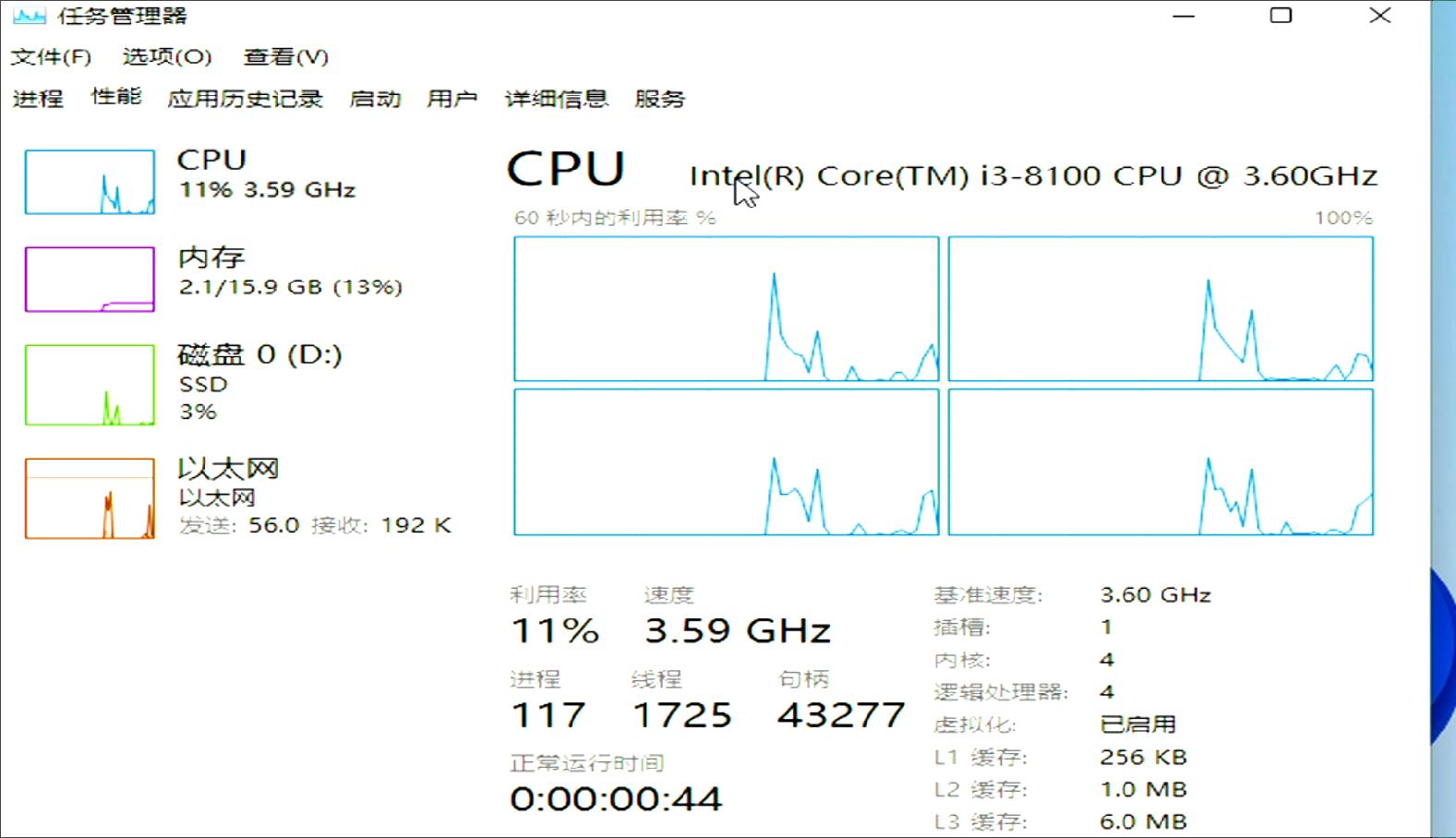
win10 screenshot:
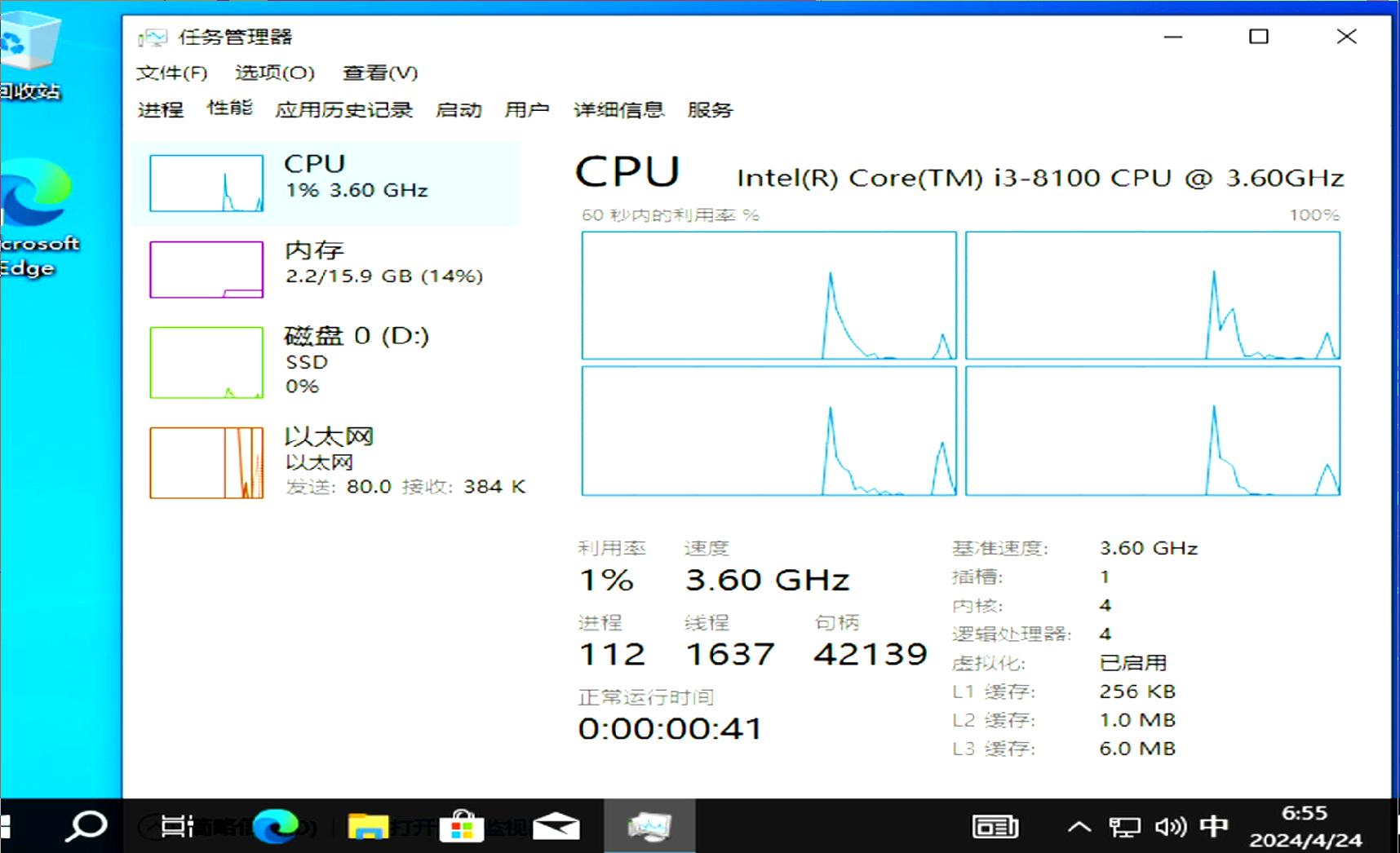
Apr 24, 2024
TechnologyRemount / for rw mode:
mount -o rw,remount -t ext4 /
Configure repository for using ustc repository:
# cat /etc/pacman.d/mirrorlist
Server = https://mirrors.ustc.edu.cn/archlinuxarm/$arch/$repo
# pacman -Sy
# pacman -S docker nfs-utils
Change docker storage location:
# mount -t nfs 192.168.1.8:/media/sda /media/nfs
# mkdir -p /media/nfs/docker
# vim /etc/docker/daemon.json
{
"data-root": "/media/nfs/docker"
}
# systemctl start docker
Combine all of the bash scripts:
# cat startdocker.sh
#!/bin/bash
mount -o rw,remount -t ext4 /
mount -t nfs 192.168.1.8:/media/sda /media/nfs
systemctl start docker
Apr 23, 2024
Technology1. basic disk preparation
Disk layout:
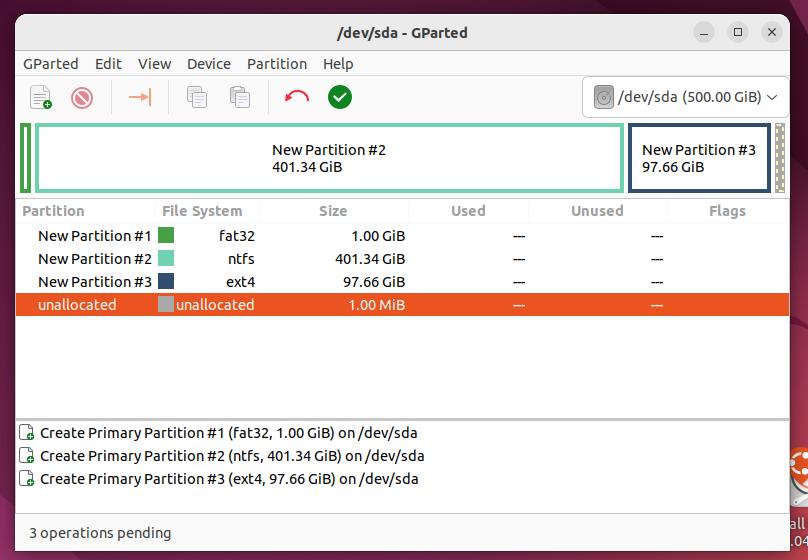
Install disk :
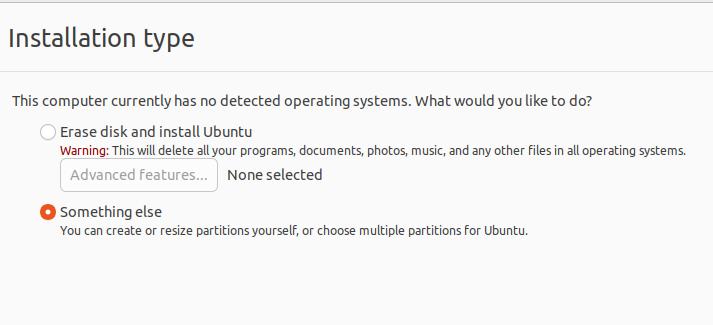
Choose efi and ext4 partition:
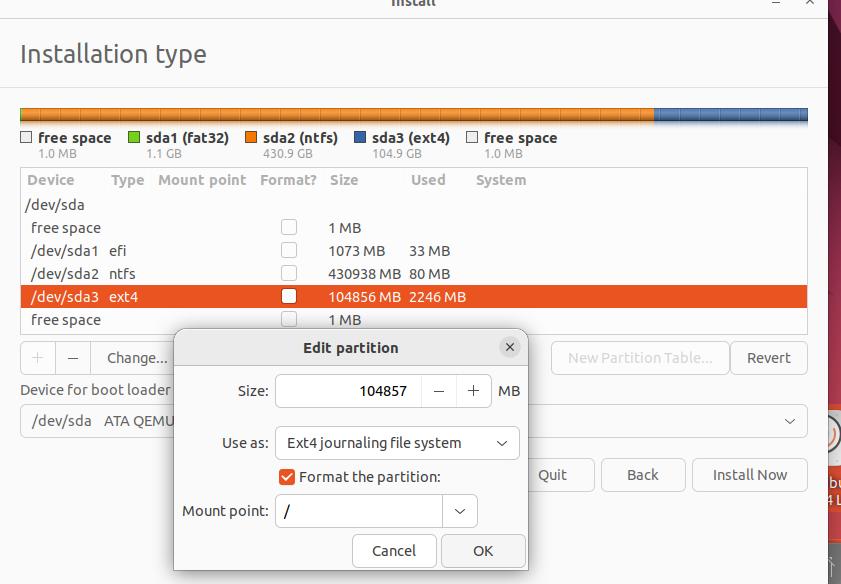
edit visudo , install vim and opensshserver, update, then save this disk.
sudo virsh undefine 0000_ventoyvhd
qemu-img create -f qcow2 -b ventoyvhd.qcow2 -F qcow2 0000_win10vhd.qcow2
qemu-img create -f qcow2 -b ventoyvhd.qcow2 -F qcow2 0001_win11vhd.qcow2
2. win11 installed on vhd
Select Professional:
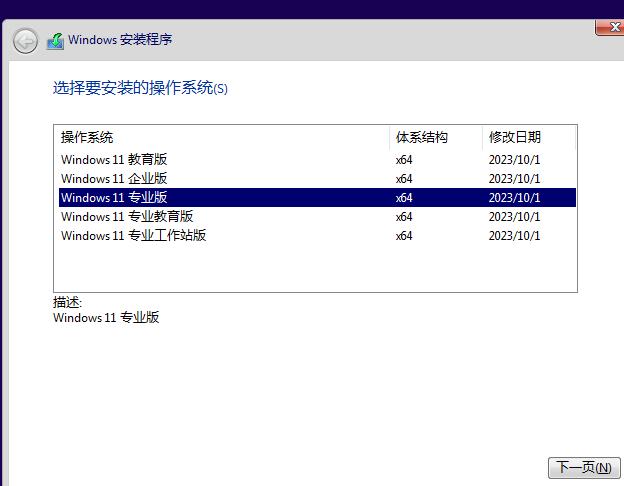
Select customized: ...
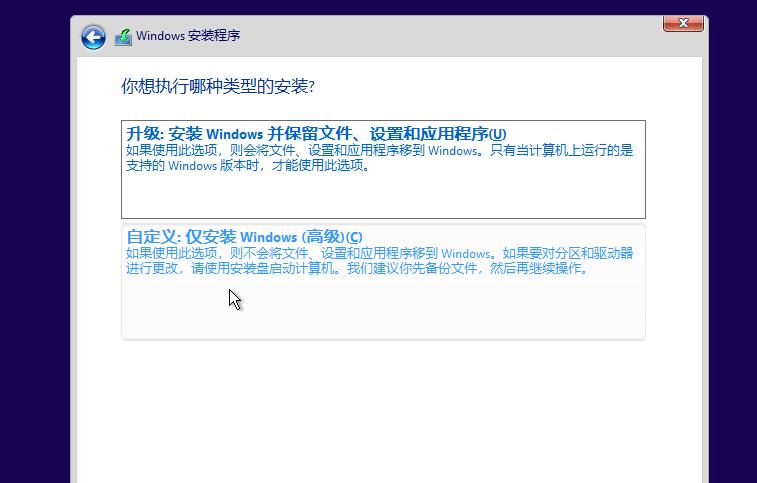
Create vdisk using following commands:
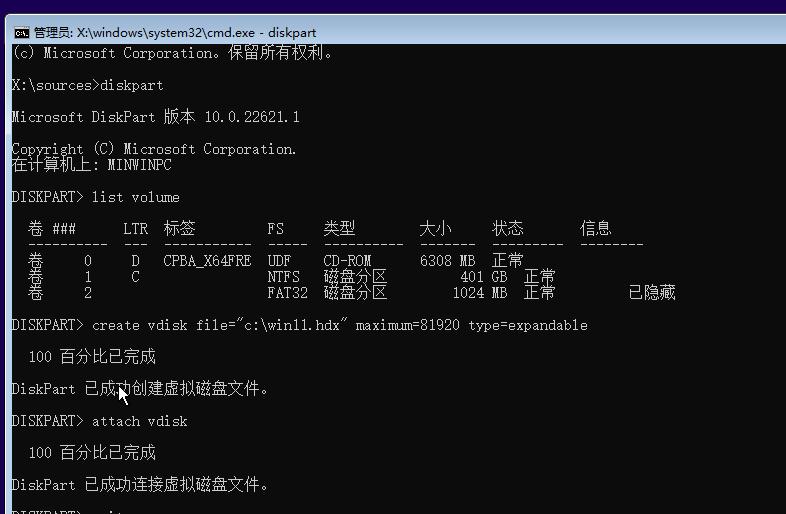
Refresh the disk(before):
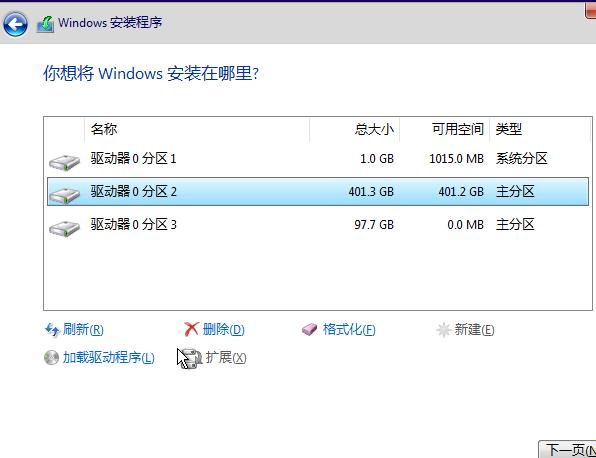
After refreshment:
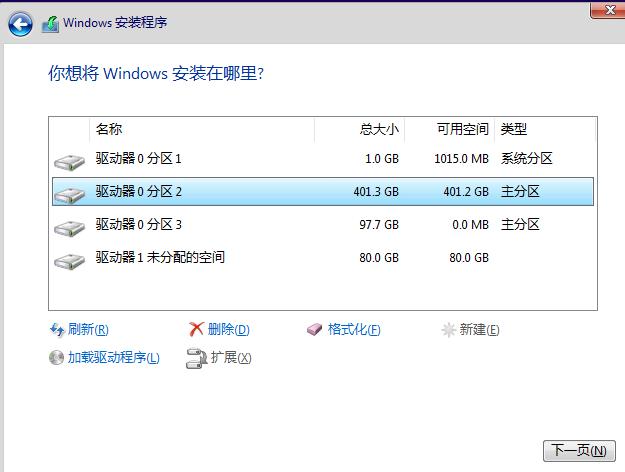
Select driver 1(80GB):
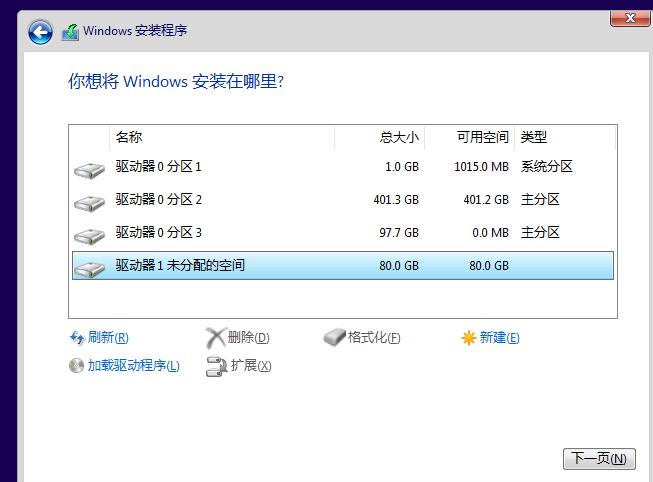
Begin installation:
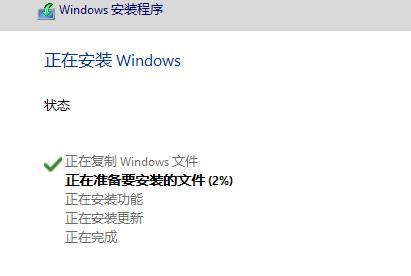
启动,蓝屏。切换到intel cpu的盒子上,安装成功,失败的为ryzen 5600G
3. win10 installed on vhd
Create the disk vhd name win10.vhd:
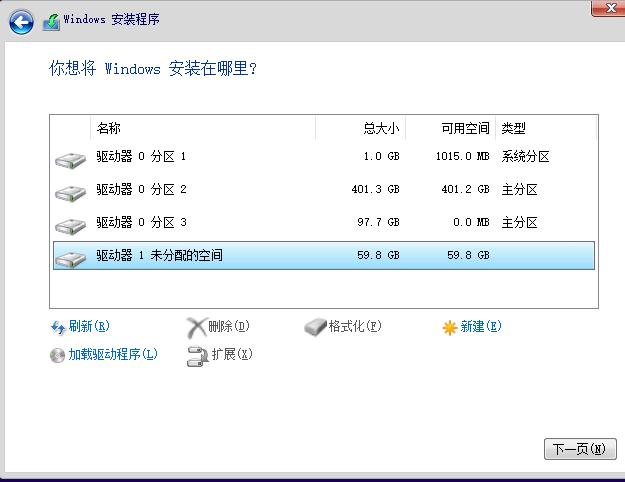
4. 提取文件
从bios里选择ubuntu,
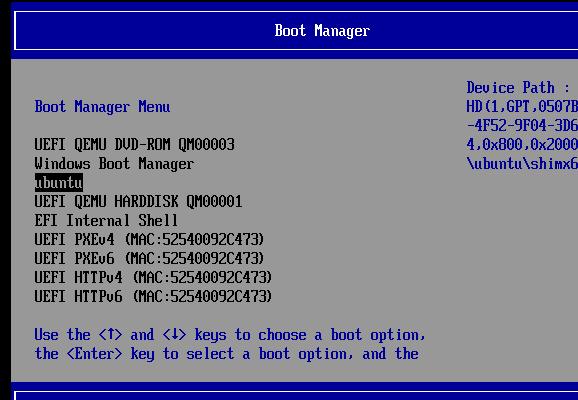
mount以后得到vhd文件:
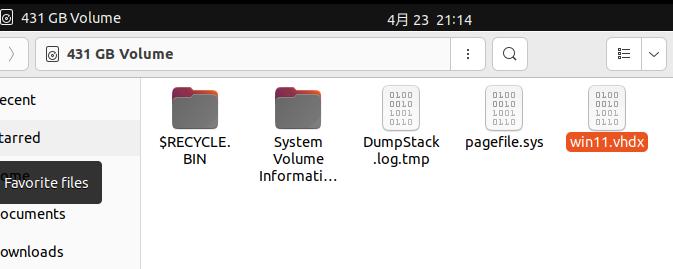
Transfer via scp :
test@vhdboot:/media/test/1A73550D25C2D3BC$ scp ./win11.vhdx dash@192.168.1.214:/media/sda/images/
dash@192.168.1.214's password:
test@vhdboot:~$ df -h | grep sda2
/dev/sda2 402G 13G 390G 4% /media/test/1A73550D25C2D3BC
# ls /root/*.tar.gz
/root/EFI_AfterInstallWin11.tar.gz /root/EFI.tar.gz
root@vhdboot:/boot/efi# scp /root/*.tar.gz dash@192.168.1.214:~
### this two files is created via following command
# (After installed )
# tar czvf /root/EFI_AfterInstallWin11.tar.gz EFI/
# (before installation)
# tar czvf /root/EFI.tar.gz EFI/
Now shutdown this vm and begin for vhdboot(using ventoy).
Also do the same for win10.vhd:

5. vhdboot(ventoy)
Download the files from pan.baidu.com:

Create a new vm:
# qemu-img create -f qcow2 -b ventoyvhd.qcow2 -F qcow2 combinevhd.qcow2
Set to uefi machine:
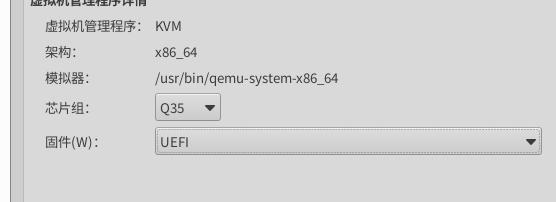
using br0 for networking:
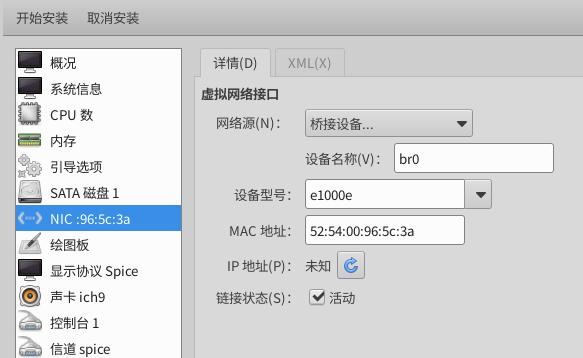
Comparing the files:
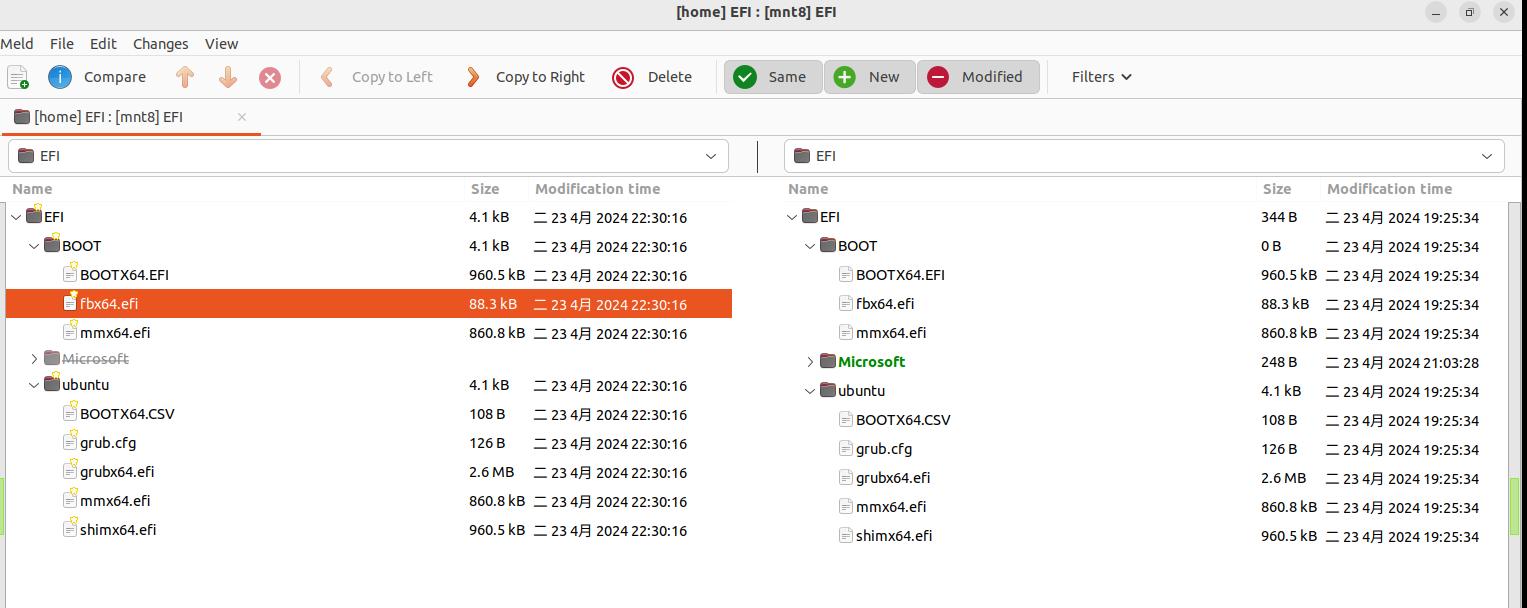
Prepare the files:
scp dash@192.168.1.214:/media/sda/images/win11.vhdx .
scp dash@192.168.1.214:~/EFI_AfterInstallWin11.tar.gz .
unzip ventoy:
7z x -ovt/ Ventoy-1.0.91-手工部署.7z
copy ventoy files to EFI partition:
$ sudo ls /boot/efi
EFI
$ sudo ls /boot/efi/EFI
BOOT ubuntu
$ sudo cp -r grub/ tool/ ventoy/ vtldr /boot/efi/
$ sudo ls /boot/efi/
EFI grub tool ventoy vtldr
$ sudo cp -r EFI/VENTOY/ /boot/efi/EFI/
$ sudo ls /boot/efi/EFI
BOOT ubuntu VENTOY
Disable secure boot, then set following :
test@vhdboot:~$ cat /etc/grub.d/99_ventoy
#!/bin/sh
exec tail -n +3 $0
menuentry 'ventoy' --class 'arch' {
insmod part_gpt
insmod fat
set root='hd0,gpt1'
chainloader /EFI/VENTOY/grubx64_real.efi
}
$ sudo grub-mkconfig -o /boot/grub/grub.cfg
Set vhdboot:
# unzip ventoy_vhdboot.zip
# cp ventoy_vhdboot/Win10Based/ventoy_vhdboot.img /boot/efi/ventoy/

这里非常完美的进入了系统。
msconfig查看,似乎也没有错
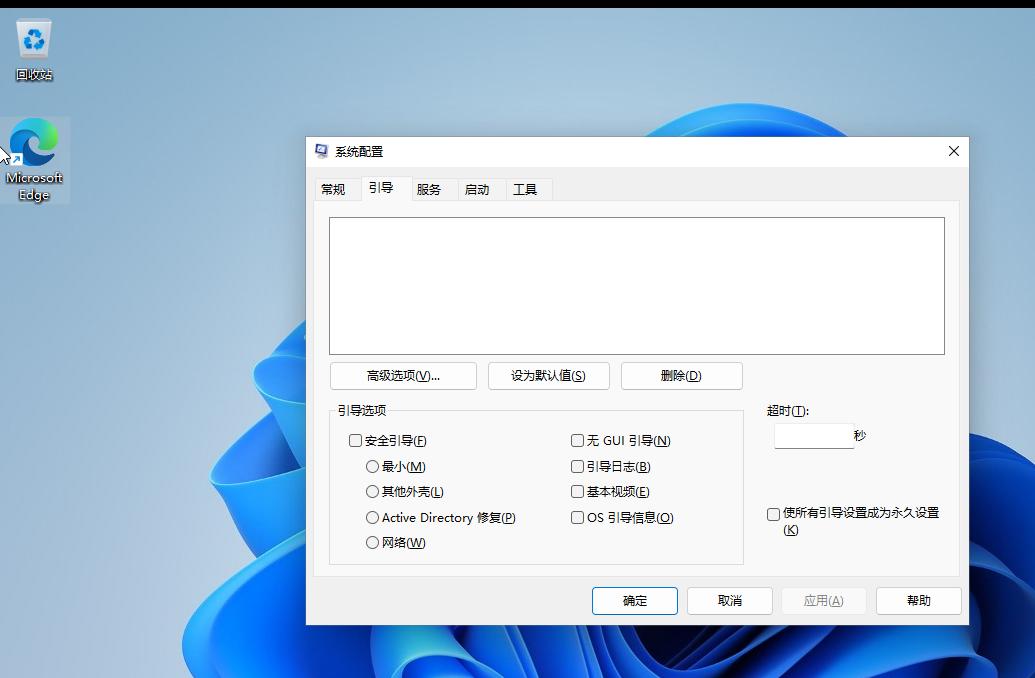
现在重新验证一下win10.vhd:
test@vhdboot:/mnt8/HHHISO$ scp dash@192.168.1.214:~/win10.vhdx .

z. tips on install win11
无法安装win11时的解决方案:
1.按“Win+R”打开“运行”,输入“regedit”并按“回车”。
提示:如果在安装过程中遇到“这台电脑无法运行Windows 11”错误,你可以按“Shift+F10”打开命令提示符,然后输入“regedit”打开注册表。
2. 在注册表编辑器中,导航到计算机\HKEY_LOCAL_MACHINE\SYSTEM\Setup,右键点击Setup文件夹创建一个新项,并将其命名为“LabConfig”。
LabConfig
3. 在LabConfig中,右键点击空白处创建一个新的DWORD(32位)值并将其命名为“BypassTPMCheck”。
BypassTPMCheck
4. 双击它并将“数值数据”更改为1,然后点击“确定”。
修改数值数据
5. 以同样的方式创建另一个DWORD,并命名为“BypassRAMCheck”,将其“数值数据”更改为1并点击“确定”。
BypassRAMCheck
6. 以同样的方式创建另一个DWORD,命名为“SecureBootCheck” 将其“数值数据”更改为1并点击“确定”。
跳过联网:
oobe\bypassnro
创建vhdk:
press Shift + F10 keys to open a command prompt.
Type diskpart into the command prompt.
use "list volume" and identify the drive letter of the newly created partition for the windows image.
Type create vdisk file="<drive letter>:\<file name>.vhdx" maximum=<size in MB> type=fixed
Type create vdisk file="<drive letter>:\<file name>.vhdx" maximum=<size in MB> type=expandable
Then run attach vdisk and then exit to exit diskpart.























